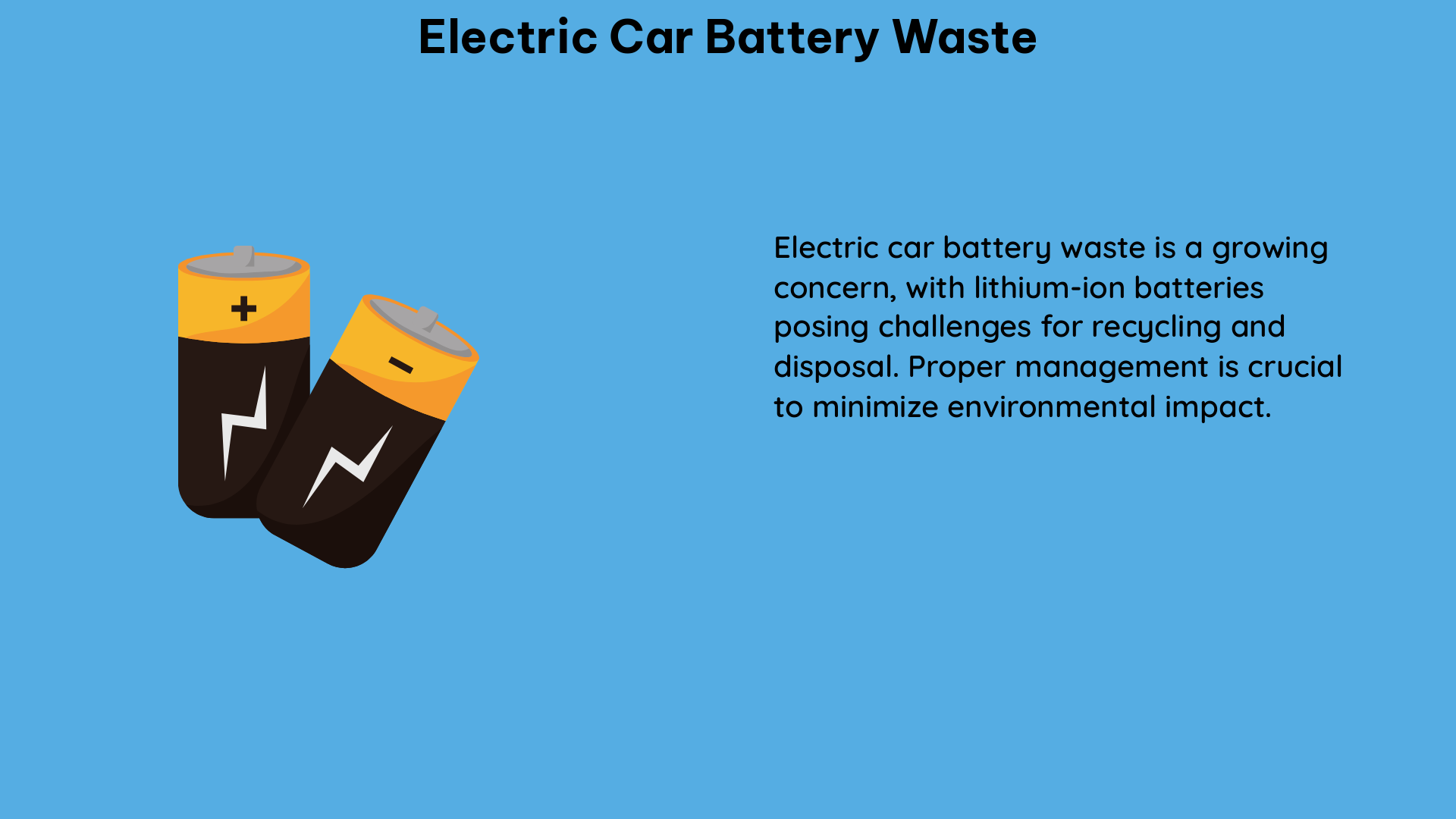As the world transitions towards a more sustainable future, the rise of electric vehicles (EVs) has brought about a new challenge – the management of electric car battery waste. With the production of lithium-ion batteries for EVs being more material-intensive than traditional combustion engines, it is crucial to understand the intricacies of this emerging issue.
The Environmental Impact of Electric Car Battery Production
-
Material Intensity: The production of lithium-ion batteries for EVs requires a significant amount of raw materials, such as lithium, nickel, manganese, and cobalt. This increased material intensity can lead to higher environmental impacts compared to traditional vehicle production.
-
Carbon Footprint: The carbon footprint of battery manufacturing ranges from 61 to 168 kg CO2 equivalent per kWh of battery capacity, with the majority of emissions coming from the extraction and processing of these critical battery materials.
-
Recycling Benefits: The recycling of EV batteries can reduce greenhouse gas emissions by 30-70% compared to the production of new batteries, depending on the recycling technology and the efficiency of the process.
The Economics of Electric Car Battery Recycling

-
Recycling Costs: The cost of recycling EV batteries can range from $1,500 to $5,500 per metric ton of battery, depending on the recycling technology and the battery chemistry.
-
Lifespan Considerations: The lifespan of EV batteries can range from 8 to 20 years, depending on the battery chemistry and the usage patterns of the vehicle. This lifespan variability can impact the economics of battery recycling and reuse.
-
End-of-Life Management: The end-of-life management of EV batteries can involve various options, such as reuse, repurposing, refurbishment, and recycling, each with different environmental and economic benefits and costs.
Technical Specifications of Electric Car Battery Waste
-
Battery Chemistry: EV batteries typically use lithium-ion technology, with various cathode chemistries such as NMC (nickel manganese cobalt), NCA (nickel cobalt aluminum), and LFP (lithium iron phosphate).
-
Battery Pack Specifications: The battery packs in EVs can weigh from 200 to 600 kg, depending on the vehicle size and battery capacity.
-
Battery Cell Configurations: The battery cells in EVs can have various shapes and sizes, such as cylindrical, prismatic, or pouch cells, and can be arranged in modules and packs to form the battery system.
-
Battery Management System: The battery management system (BMS) in EVs controls the charging and discharging of the battery, monitors the battery state-of-charge and state-of-health, and ensures the safety and efficiency of the battery system.
-
Recycling Process: The battery recycling process can involve various steps, such as disassembly, discharging, shredding, sorting, and hydrometallurgical or pyrometallurgical processing, depending on the battery chemistry and the recycling technology.
DIY Tips for Electric Car Battery Waste Management
-
Battery Discharge and Disconnection: Properly discharge and disconnect the battery before disassembling it, to avoid any safety hazards or damage to the battery cells.
-
Handling and Transportation: Use appropriate tools and protective equipment, such as gloves, goggles, and a battery handling cart, to handle and transport the battery cells and modules.
-
Sorting and Labeling: Sort and label the battery cells and modules according to their chemistry, capacity, and voltage, to facilitate the recycling or repurposing process.
-
Reuse and Repurposing: Consider reusing or repurposing the battery cells or modules for secondary applications, such as stationary energy storage or portable power banks, to extend their lifespan and reduce waste.
-
Regulatory Compliance: Follow the local regulations and guidelines for the disposal or recycling of EV batteries, and seek professional assistance if needed.
By understanding the complexities of electric car battery waste, we can develop more sustainable and efficient solutions to manage this emerging challenge. As the EV market continues to grow, the need for comprehensive and innovative approaches to battery waste management will only become more critical.
References:
- Kelleher Research Study on Reuse and Recycling of Batteries Employed in Electric Vehicles Final Report September, 2019.
- Charting the electric vehicle battery reuse and recycling network in North America.
- How much CO2 is emitted by manufacturing batteries? | MIT Climate.
- Rules for the calculation of the Carbon Footprint of Electric Vehicle Batteries.
- Electric Vehicle Battery Recycling: An Overview of Current Technologies and Future Directions.

The lambdageeks.com Core SME Team is a group of experienced subject matter experts from diverse scientific and technical fields including Physics, Chemistry, Technology,Electronics & Electrical Engineering, Automotive, Mechanical Engineering. Our team collaborates to create high-quality, well-researched articles on a wide range of science and technology topics for the lambdageeks.com website.
All Our Senior SME are having more than 7 Years of experience in the respective fields . They are either Working Industry Professionals or assocaited With different Universities. Refer Our Authors Page to get to know About our Core SMEs.